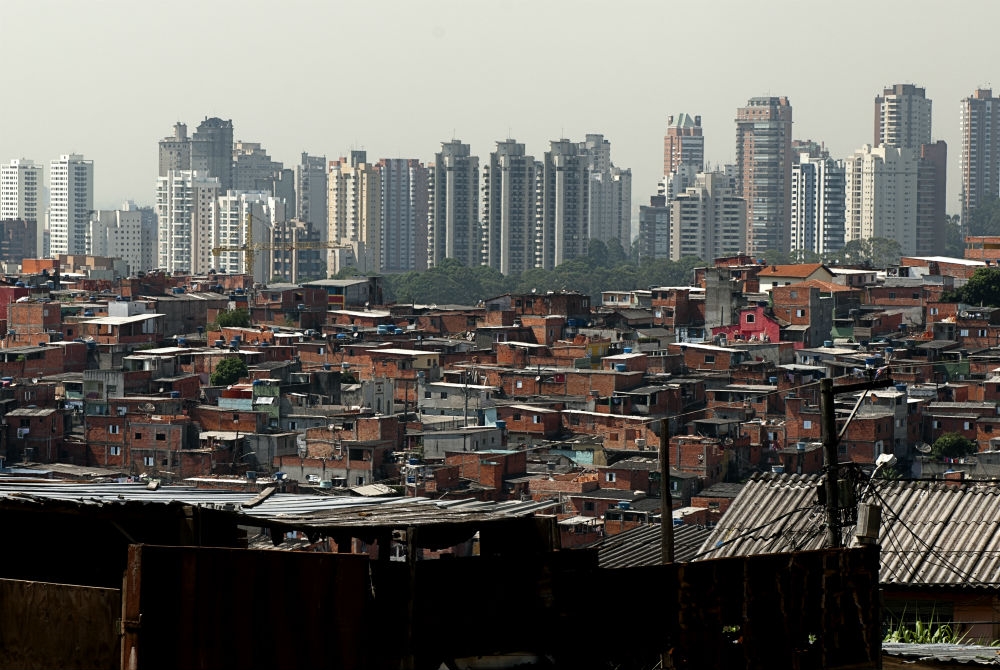

Collaborative platform forms part of a research project being carried out in São Paulo since 2012 that monitors and analyzes removals in the city with the aim of creating solutions for housing and urban development issues (photo: Léo Ramos Chaves / Pesquisa FAPESP)
Collaborative platform forms part of a research project being carried out in São Paulo since 2012 that monitors and analyzes removals in the city with the aim of creating solutions for housing and urban development issues.
Collaborative platform forms part of a research project being carried out in São Paulo since 2012 that monitors and analyzes removals in the city with the aim of creating solutions for housing and urban development issues.

Collaborative platform forms part of a research project being carried out in São Paulo since 2012 that monitors and analyzes removals in the city with the aim of creating solutions for housing and urban development issues (photo: Léo Ramos Chaves / Pesquisa FAPESP)
By Maria Fernanda Ziegler, from Lyon | Agência FAPESP – In the last two years, almost 30,000 families have been removed from their homes in São Paulo Metropolitan Area (SPMA), Brazil, and the homes of more than 170,000 are under threat.
The data come from the Removals Observatory, a project coordinated by Labcity at the School of Architecture and Urbanism of the University of São Paulo (USP), in partnership with the Federal University of the ABC (UFABC) and the Federal University of São Paulo (UNIFESP). The collaborative platform has been monitoring evictions and forced displacements in the SPMA since 2012.
“That’s the situation we have. They’re entire families whose day-to-day lives are affected. Among the reasons for removals are repossessions, court decisions, and, to a lesser extent, public policies for removing homes to open up avenues or public-private partnership building projects,” said Paula Santoro, one of the coordinators of Labcity, in a presentation given on November 22nd, at FAPESP Week France.
According to the researcher, the collaborative maps are built based on complaints, news divulged in the press, and also fieldwork carried out with the affected populations. The platform also has a new way of obtaining information, supported by a Cooperation Agreement with the Public Prosecutor’s Office and the Public Defender’s Office of the State of São Paulo, based on the decisions of the Judiciary.
Using a method called “data web scraping” it is possible to extract from the public database of the Court of Justice (a database of sentences) information relating to judicial actions for repossession of properties, evictions, and expropriations, which can, for the most part, result in forced removals.
“It’s an important partnership not only as it enables access and the organization of data, but also as it aims to advocate for guaranteeing city rights, housing rights, and human rights, as well as for the development of policies that avoid or take into account the involuntary displacements in the São Paulo metropolis,” said Santoro.
Creating links
The group is investigating urban restructuring processes and housing policies. “We’re changing our way of looking at this question and seeking to understand the ties between the dynamics of community territories and the policy proposals and urban projects in these areas, observing how one is transforming the other,” she said.
According to Santoro, there are criticisms of the studies that have been based solely on research about the regulatory agenda proposed by the state. “For that reason, we cannot only look at the regulatory instruments, but also to the state, which isn’t neutral in the way it has altered and created new instruments – generally through the master plan, tax incentives, or in building rights – or promoted openings and ‘slots’ to enable different alliances with various social actors that influence changes in these instruments,” she said.
The researcher has one project, supported by FAPESP, focused on understanding inclusive housing policies and exclusive urban restructuring processes. The study compares policies in the city of New York, in the United States, and in São Paulo.
“In New York, there’s a policy that conditioned the construction of new buildings to the provision of affordable homes as a counterpart. However, this process resulted in the alteration of the population that lived in one of these zones. The Latino and black population was forced to leave their homes and the profile of residents became white North Americans. The alteration is related with the reduction in the supply of units and increase in the price of land, a consequence of the increase in rent values. It wasn’t, therefore, an inclusive policy,” she said.
In São Paulo, the group intends to analyze the impacts of public-private partnership (PPPs) on the regulation of housing and urban development. “Around 10% of the urban area in the municipality of São Paulo can be transformed through projects based on different instruments and public-private partnerships, which can stimulate an increase in land prices in central areas of the metropolis with new real estate ventures,” she said.
The FAPESP Week France symposium took place between November 21st and 27th, thanks to a partnership between FAPESP and the universities of Lyon and Paris, both in France. Read other news about the event at http://www.fapesp.br/week2019/france/.
Republish
The Agency FAPESP licenses news via Creative Commons (CC-BY-NC-ND) so that they can be republished free of charge and in a simple way by other digital or printed vehicles. Agência FAPESP must be credited as the source of the content being republished and the name of the reporter (if any) must be attributed. Using the HMTL button below allows compliance with these rules, detailed in Digital Republishing Policy FAPESP.





